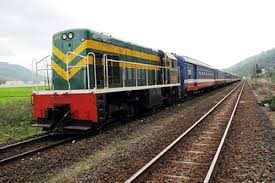The Chinese government has expressed confidence that it will overcome political and financial obstacles to be able to speed up the development of the Eurasian Trans-Asian Railway, the China Economic Weekly reported.
According to the report, the railway will offer China great opportunities to tap into the Association of Southeast Asian Nations (ASEAN), which includes 11 countries and a population of 1.9 billion, considering that ASEAN has surpassed Japan to become China's largest trading partner with bilateral trade that accounted for 13 percent of the world trade in 2010.
An official with Kunming's railway bureau said that the railway's route through Singapore, Kuala Lumpur, Bangkok, Phnom Penh, Ho Chi Minh and Hanoi to Kunming is already under construction. The section between Kunming and Mengzi, also in Yunnan Province, has been completed, and the other sections between Mengzi to the province's Hekou Yao autonomous county is expected to be completed by the end of this year. The sections are expected to improve regional trade and enhance local tourism, the report added.
Once the Trans-Asian Railway is completed, Kunming, Yunnan's provincial capital, will become a transportation hub.
The report said that China's National Development and Reform Commission has approved three more lines between Kunming and areas near the border between China and Vietnam, Myanmar, Laos and Indonesia.
The report added that most countries where the Trans-Asian Railway passes through have existing railways, but they differ in track gauge, hence goods have to be unloaded and transferred from a train to another when the gauge changes.
Wang Mengshu, vice chief engineer of China Railway Tunnel Group, said that the existing railways must be changed to adopt to Chinese technology and China's standard gauge.
In February, Beijing regulated the gauge in the high-speed railways' design guides, promoting it to other countries using China's high-speed railway technology such as Malaysia, Singapore, India and Russia.
Putting into consideration the political unrest in Thailand, which could pose an obstacle to the rail's development, Premier Li Keqiang called for an early start to the construction of the rail line running through Thailand during his meeting with Thailand Foreign Minister Don Pramudwinai on Oct. 9.
Wang added that China's ties with Laos expedited the construction of the railway's lines in Laos which has been built and funded by China.
According to Wang, the funds for construction of the railway will be provided by the Asian Infrastructure Investment Bank (AIIB).
The World Bank previously said that middle and low-income countries have only invested $400 billion on infrastructure, while Asia needed to spend $8.22 trillion over the next 10 years.
The paper said that the reason other countries joined in the AIIB is due to the gap between the existing investment and the funds needed.




























